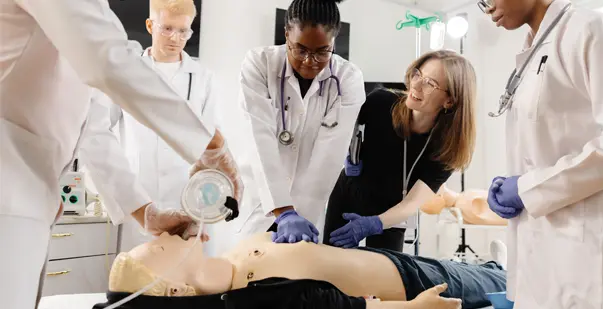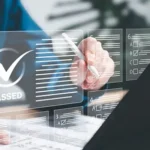Table Of Content(s)
- How to get BLS certification?
- What is BLS Certification? Why is it important?
- What are the fundamentals of Basic Life Support?
- Steps to enroll in a BLS class
- Conclusion
A BLS or Basic Life Support certification is an important professional credential that demonstrates an individual’s ability to perform lifesaving interventions in emergencies. This certification can be acquired through online and offline training courses from certified providers. You do not need to necessarily be in the healthcare field to get a BLS certification. Whether you are a nurse, firefighter or simply a responsible citizen, you can benefit immensely from a basic life support certification.
Approximately 10 million people in the US get BLS certified every year. Passing the BLS certification training program can equip you with the skills to provide high quality care during respiratory or cardiac emergencies. But how to get online BLS certification course and how to go ahead with the right choice? Don’t worry, we have got you covered.
In this blog, we will walk you through the entire process of getting BLS certified. By the end of this, you will have a clear roadmap to your dreams.
Master BLS Now
Get BLS certified with confidence
What is BLS certification? Why is it important?
BLS stands for Basic Life Support and includes CPR techniques, AED usage and techniques for relieving airway obstructions. BLS certification equips individuals with the skills to respond quickly and efficiently in life-threatening situations.
Learn why a BLS certification is important:
- Life-Saving Skills: BLS certification equips individuals with critical skills that can save lives in emergencies such as heart attacks, drowning, or choking incidents.
- Professional Requirement: Many healthcare and public safety roles require BLS certification as a standard qualification.
- Preparedness: Being BLS certified ensures that you are prepared to respond quickly and effectively in life-threatening situations, potentially increasing the chances of survival and recovery for the affected individuals.
- Confidence and Competence: Training and certification provide confidence and competence to handle high-pressure situations calmly and efficiently.
Read More: Cardiac disease in the young: Recognizing and Understanding Early Signs
Steps to enroll in a BLS Class
Enrolling in a Basic Life Support (BLS) class is a straightforward process. This ensures you gain the necessary skills to provide life-saving assistance in emergencies. Follow these steps to enroll in a BLS class that fits your needs.
- Choose the Right Course: Select a course that fits your schedule and learning preferences, whether it’s in-person, online, or a blended format that combines both.
- Check Prerequisites: Verify if there are any prerequisites for the course, such as age requirements or previous certifications.
- Register for the Course: Visit the provider’s website or contact them directly to register. Fill out the necessary forms and provide any required documentation.
- Pay the Course Fee: Complete the payment process for the course. Some providers may offer financial assistance or payment plans if needed.
- Prepare for the Class: Once registered, review any pre-course materials provided by the instructor. This may include reading assignments or online modules.
- Attend the Training: Participate actively in the training sessions, whether they are in-person or online. Engage with the practical exercises and ask questions to ensure you understand the concepts.
- Complete the Exam: Successfully complete the written and practical exams to demonstrate your proficiency in BLS skills.
- Receive Certification: After passing the exams, you will receive your BLS certification card, typically valid for two years.
Master BLS Now
Get BLS certified with confidence
What are the fundamentals of Basic Life Support?
Basic Life Support or BLS mostly comprises medical techniques and procedures. These are aimed to provide immediate care to individuals experiencing cardiac arrests, strokes or cardiopulmonary attacks. BLS is foundational for healthcare providers, and it helps sustain life until medical help arrives. To perform the lifesaving interventions effectively, it is important to understand the fundamentals of BLS.
Here are the key fundamentals of Basic Life Support (BLS):
- Immediate Response:
- Quickly assessing the situation and checking for responsiveness.
- Calling for emergency medical services (EMS) immediately.
- High-Quality Cardiopulmonary Resuscitation (CPR):
- Chest Compressions:
- Performing chest compressions at the correct rate (100-120
compressions per minute) and depth (at least 2 inches for adults). - Allowing full chest recoil between compressions.
- Performing chest compressions at the correct rate (100-120
- Rescue Breaths:
- Providing effective rescue breaths that make the chest rise.
- Using a barrier device to prevent infection.
- Chest Compressions:
- Automated External Defibrillator (AED) Use:
- Quickly retrieving and correctly using an AED.
- Following the AED prompts to deliver a shock if necessary.
- Airway Management:
- Ensuring the airway is open and clear.
- Using techniques like the head-tilt-chin-lift maneuver or the jaw-thrust
maneuver (only if spinal injury is suspected).
- Relief of Choking:
- Identifying signs of severe airway obstruction.
- Performing abdominal thrusts (Heimlich maneuver) for conscious adults
and children. - Providing back blows and chest thrusts for infants.
- Administering appropriate interventions for unconscious individuals.
- Effective Communication and Teamwork:
- Coordinating with other rescuers to perform BLS tasks efficiently.
- Communicating clearly and assertively in high-pressure situations.
- Assigning roles and responsibilities to team members during a
resuscitation effort.
- Continuous Assessment and Care:
- Continuously monitoring the patient’s condition.
- Providing ongoing care and reassessment until EMS arrives.
- Transitioning care smoothly to advanced medical personnel upon their
arrival.
Read More: Study Guide To Body Systems: ACLS Certification Resource
Conclusion
Obtaining Basic Life Support (BLS) certification is important for anyone who is committed to be prepared for emergencies. By following a structured process, you can master the skills of Basic Life Support.
So, instead of getting confused when questioned -“How to get BLS certification”, now you can begin your journey towards becoming BLS certified. Your readiness to act swiftly in emergencies can make a real difference when someone’s life is in danger.







